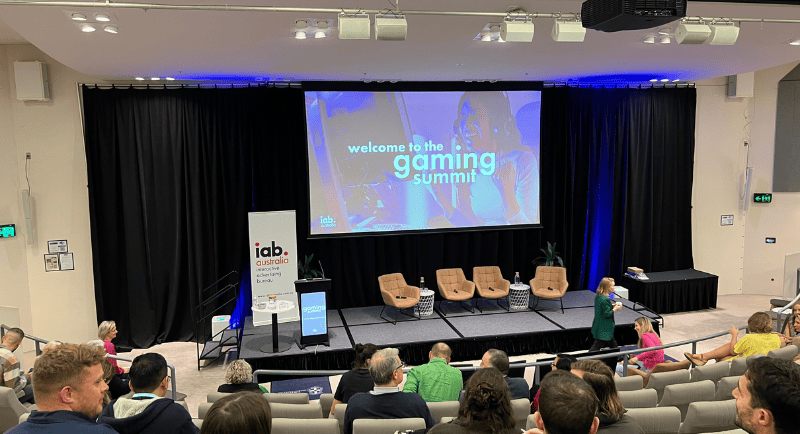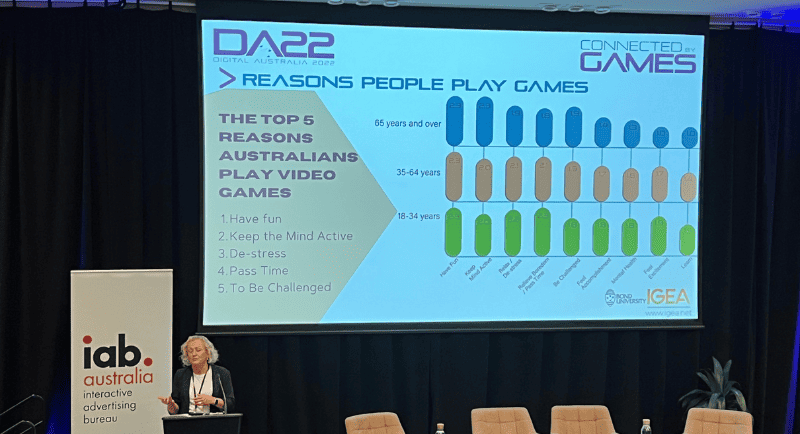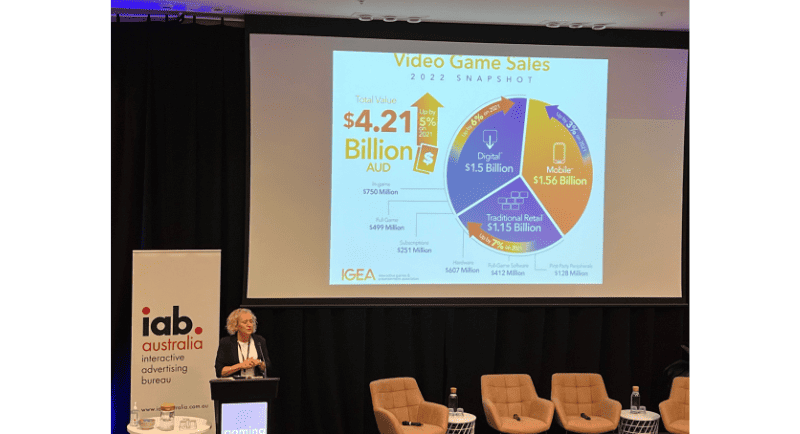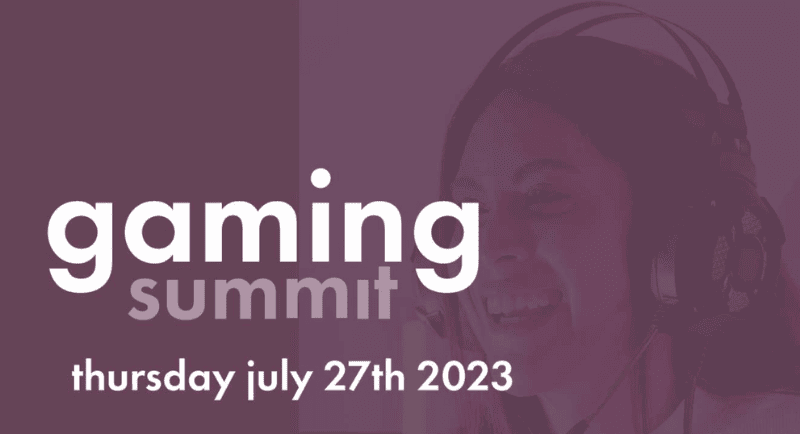On Thursday, July 27 at the NSW Teachers Federation Conference Centre in Surry Hills, IAB Australia hosted their 2023 Gaming Summit featuring a panel of speakers, giving industry insight into how gaming can be utilized for effective advertising and why gaming can be seen as a misunderstood market.

The summit opened with Natalie Stanbury, research director from IAB Australia taking guests through brand new data gathered from IAB in their Game Advertising State of the Nation 2023 report. The data was gathered from various media agencies and organisations and gave insight into what to do when it comes to gaming advertising including:
• Continue to invest in in-game advertising and marketing and experiment with formats.
• Leverage brand building and brand storytelling opportunities … and look for potential success across the marketing funnel.
• Use technology and planning measures that ensure gaming environments are suitable for the brand.
• Continue to provide evidence of the effectiveness for brand and ROI outcomes as well as demonstrate how game advertising works with other media.
• Design creative with context in mind.
• Keep informed and build knowledge.
Next up to speak was Raelene Knowles, COO of the IGEA who presented data that showed what a contemporary “gamer” looks like in 2023. A common misconception in gaming is “who” exactly is a gamer. Many think male, teenager to middle-aged, and playing exclusively on a game console such as a PC, PlayStation, or Xbox. However, the data gathered by IGEA proves otherwise as data from 2022 shows that 53% of gamers are male, 46% are female and 1% identify as non-binary.

This data compared to data gathered in 2005 by IGEA shows an 8% increase going from 38% to 46% of players identifying as female.
This section also revealed that two-thirds or more than 17 million of Australia’s 25.8 million residents are connected with video games, and this is seen through the types of game devices in Australian households.
The most common device for playing games in 2021 was a dedicated console (PlayStation, Xbox) which traded places with PCs from the previous study by IGEA. However, in 2021, mobile rose to second place among devices used to play in game-connected households.
This data shows that being a “gamer” isn’t exclusive to owning and regularly playing a dedicated game console. The mobile gaming market is continuously breathing down the neck of dedicated gaming consoles thanks to the mega-popularity of games such as Candy Crush and Roblox.
A Snapshot of Video Game Sales in 2022
2020 was a year full of surprises, to say the least, and for the gaming community, one of the many unwelcome surprises was how significantly difficult it was to buy a brand new Next-Gen console (PlayStation 5 and Xbox Series X). Due to supply chain issues caused by COVID, successfully finding a next-gen console in a brick-and-mortar store in 2020 and into 2021 was near impossible, you either had to be extremely lucky or know someone on the other side of the counter.
However, IGEA has revealed that in 2022, this changed drastically, but surprisingly, game hardware sales are near the bottom of total spending when put into categories. Overall, $4.21 Billion AUD was spent on video games as a whole in 2022, up 5% on 2021. Topping the individual categories on gaming sales was in-game microtransactions, grossing $750 million while individual games followed bringing in $499 million.
Mobile gaming making up $1.56 billion of total value proves just how big the mobile gaming market is, and for agencies, reveals a goldmine in terms of results for clients.

Eyes up
Tolga Balabaner, creative strategy lead at Creative Works, Google then came on stage to deliver a powerful example of how an ad campaign incorporating Fortnite, female-identifying streamers/creators, and tournaments can promote an important message regarding the culture of gaming.
Beauty brand Maybelline, New York approached Creative Works at Google with a business challenge that Balabaner was struck by.
“How do we continue to grow as a market leader, with no new news?”
Enter the 4-level campaign that was completed in collaboration with agency Click Media incorporating a social experiment video, YouTube and Twitch streamers/creators in small ads and a Fortnite tournament held at Fortress Gaming in Melbourne.
Unfortunately, female-identifying players in the gaming community have been historically harassed and abused during online games due to the stigma of them playing in an assumed male-dominated space. Balabaner provided an insight that female gamers may be the fastest-growing audience in the world of gaming – but they are also the most harassed.
The social experiment video mentioned before saw 2 popular male streamers use a female voice mod in online shooter games to see if they would be harassed or abused for speaking in-game chat. The results are as you may think, with harassment beginning nearly as soon as their mics were taken off mute.
This social experiment video was made in collaboration with Maybelline, New York using the tagline, ‘Eyes up’ as a call to point out online abuse when witnessed and to bring an end to the stigma that surrounds the gaming community.
The campaign was cultivated in a Fortnite tournament held at Fortress Gaming in Melbourne which featured female players competing in a 32-person match inside ”Eyes Up City”, a map built in Fortnite specifically for the campaign that featured beauty products as power-ups such as teleportation and the ability to jump higher in-game.
The ad campaign ultimately proved that gaming can be used in a variety of ways to promote an important message of calling out wrongdoing, abolishing stigmas and empowering female-identifying gamers.
The main takeaway from the summit
Gone are the days of thinking a gamer is one singular type of person, gaming is for everyone and opportunities for successful advertising in gaming are all around, just keep your eyes up.
